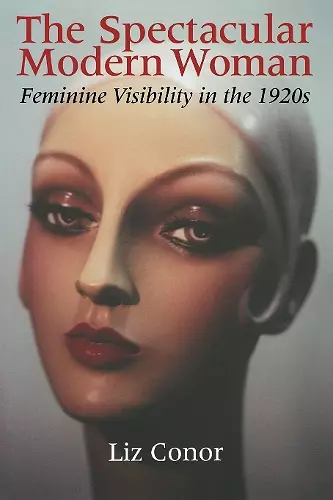The Spectacular Modern Woman
Feminine Visibility in the 1920s
Format:Paperback
Publisher:Indiana University Press
Published:16th Jul '04
Currently unavailable, and unfortunately no date known when it will be back

How the "modern appearing woman" inaugurated a new relation between female identity and visual culture.
Focusing on the city girl in the metropolitan scene, the 'Screen Struck Girl' in the cinematic scene, the beauty contestant in the photographic scene, the 'primitive' woman in the late colonial scene, and the flapper in the heterosexual leisure scene, this title shows how women's roles were intimately tied to the visual culture of the day.
In The Spectacular Modern Woman, Liz Conor illustrates how technological advances in image reproduction transformed Western industrial societies into visual or "ocularcentric" cultures with significant and complex consequences for women's lives. With the rise of mass media, photography, and movies, a woman's visibility became a mark of her modernity, and the result was at once liberating and confining, given the many narrow conceptions of what it meant to be a modern woman. Focusing on the city girl in the metropolitan scene, the "Screen Struck Girl" in the cinematic scene, the mannequin in the commodity scene, the beauty contestant in the photographic scene, the "primitive" woman in the late colonial scene, and the flapper in the heterosexual leisure scene, Conor shows how women's roles were intimately tied to the visual culture of the day.
Providing an overview of the evolution of the modern woman who emerged in the 1920s, Conor (Univ. of Melbourne, Australia) shows that woman emerging from underneath clothing—first her legs, then her hands, and finally her torso. As modern women moved into the city, these urbanized women became more of a spectacle because of the availability of varied clothing styles and makeup—and images designed to make them want to purchase more feminine objects. These objects would allow them to cover and disguise unsightly and unpleasant female characteristics: menstruation, body hair, body odor. Not surprisingly, Conor focuses her discussion of colonialism on Australia, where Aboriginal women were considered less beautiful than white women. She ends with a discussion of the flapper as the representation of the emancipated urban woman, an image that pervaded the 1920s and came to represent the Jazz Age. Conor points out that even when the time came for women to more toward reinvention on their own terms, that emancipation continued to move in the direction of a spectacle meant to attract the opposite sex. Summing Up: Recommended. Graduate and research collections.
-- K. Gale * California Institute of the Arts , 2005may CHOIISBN: 9780253216700
Dimensions: unknown
Weight: 549g
360 pages